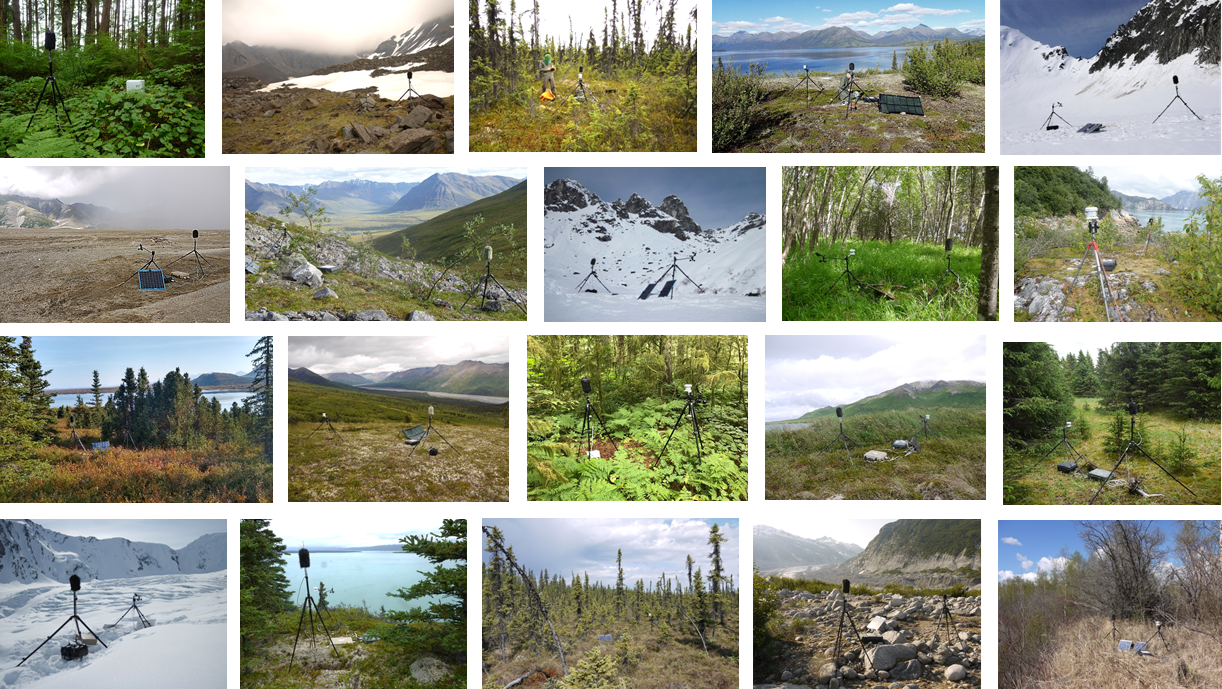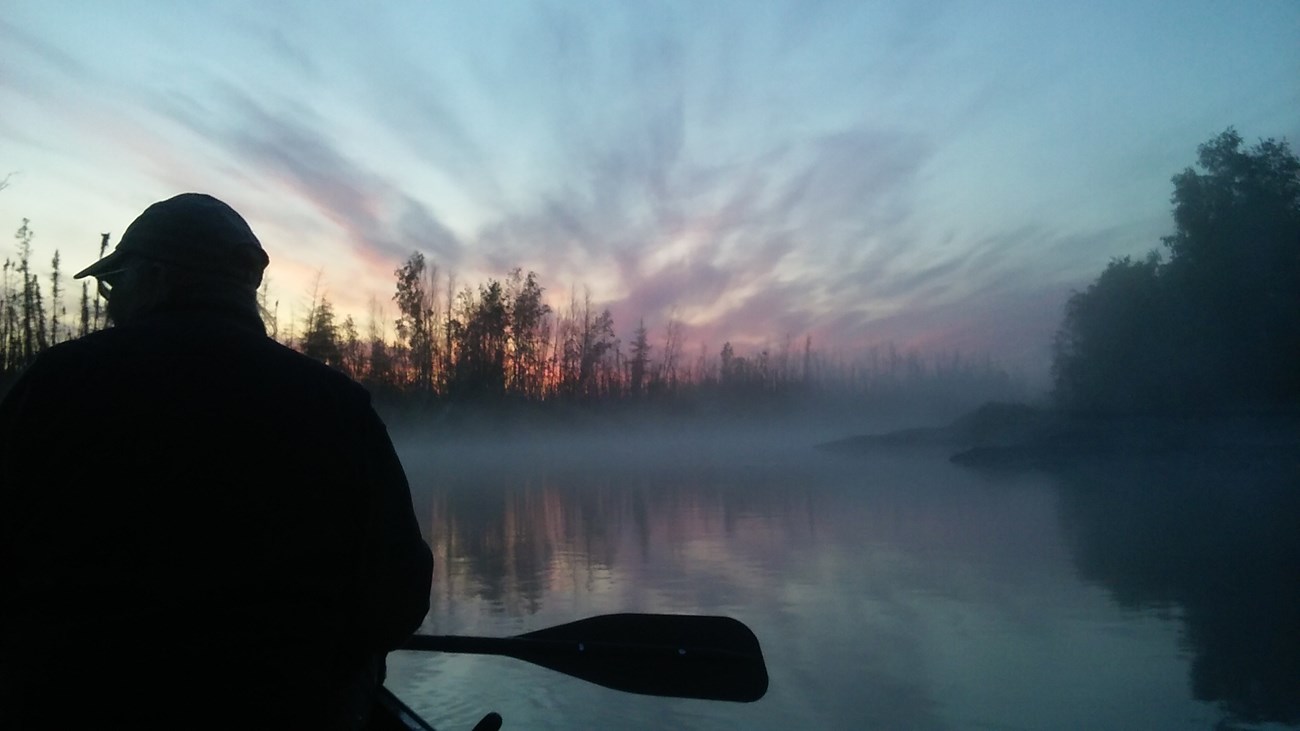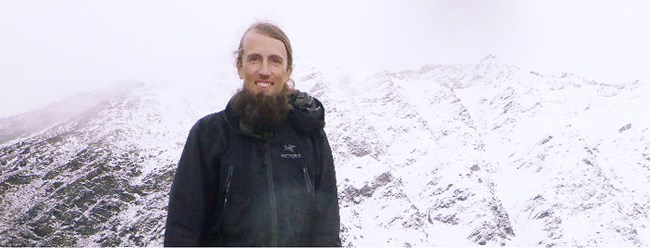Last updated: February 24, 2025
Article
The Prescience of Desired Future Conditions
Landscape restoration goals must intersect with deeply imagined park planning to realize the future we want.

Image credit: NPS / D. H. Betchkal
About a decade ago, I first encountered the term, “desired future conditions,” wrapped in words of rebuke. They were in response to noise standards in Denali National Park and Preserve’s 2006 Backcountry Management Plan. This was the first National Park Service plan to provide quantitative standards for soundscape management. Those numeric thresholds were viewed by some in the agency as “unrealistic” and “unachievable.” They simply weren’t “based on current conditions” and therefore out of touch. But now that we are on the threshold of a quieter future, one without fossil fuels and combustion engines, those standards no longer seem so out of touch.
An Emerging Philosophy
When I started out as the soundscape program manager for Denali in 2011, I had a foreshortened view of history and limited understanding of how people travel throughout the Alaska Range. The entirety of my planning attention was spent on learning how to get to acoustic measurement sites, make the measurements, and report compliance with respect to the backcountry plan. Responding to complex questions such as how we should route administrative helicopter flights to meet soundscape standards or whether the standards should be revised, I often borrowed language from others. I tempered conservation messages with statements like “I know these standards are really low” or “I know these are impossible to achieve.” It is fortunate that I was sheltered from decision-making demands during those years, because it gave me focus to intently study the transportation system of the park in detail.
“Noisy, busy, Alaska” is only a recently devised state. Noise standards considered unrealistic today were normal 30 years ago.
Observations became the roots of an emerging philosophy. To make these observations, I traveled in Alaska on foot, by skis, pack rafts, dog teams, snowmachines, buses, boats, ATVs, trucks, vessels, helicopters, and airplanes. Everywhere I went, I encountered people with varied perspectives on travel. Among the most astute were the Denali Aircraft Overflights Advisory Council, a group of experienced, opinionated Alaskans with much to share. This was the second phase of my developing philosophy: looking into the past. It became obvious to me that “noisy, busy, Alaska” is only a recently devised state. Noise standards considered unrealistic today were normal 30 years ago. In some ways, I relive this formative stage with every landscape I newly encounter; for instance, by learning the history of Katmai National Park and Preserve as we develop its backcountry management plan.
A Pivotal Law
At the heart of Alaskan public land management is the Alaska National Interest Lands Conservation Act (ANILCA) of 1980 and subsequent amendments. This law and its related predecessors address Native Alaskan land claims, subsistence living, energy development, economic growth, and transportation. It is administered primarily by the National Park Service’s parent agency, the U.S. Department of the Interior, which manages most federal lands in Alaska. ANCILA touches tangentially on noise through its treatment of transportation “for traditional activities (where such activities are permitted by this Act or other law) and for travel to and from villages and homesites.”
In 2016, I was extremely fortunate to spend time in Minchumina, an Alaskan subsistence village, in the company of noted author, sound recordist, and anthropologist Richard Nelson. Storyteller and recordist Hank Lentfer came along too. The impetus for the trip was Griselda Landa-Posas, a Denali Mosaics in Science student, whom I was mentoring. She spent her summer collecting a library of acoustic field specimens using a parabolic amplifier.
Minchumina is a small community on the northwest boundary of Denali, situated in a vast area of boreal lowlands. Although it is not in an area managed by the National Park Service, the people in Minchumina spend significant time gathering wild, renewable resources in the park. To me, hearing Richard and Hank chat with the Minchumina residents, the spirit of ANILCA was palpably alive. In sober dialogues, each resident made it clear to us that a quiet landscape was culturally important to them. Each said so in a different way, but regardless, it’s how they wanted to live. Their natural sound restoration goals intersected with the Denali Backcountry Management Plan’s desired future condition of quietude. One noise event per day suddenly didn’t feel so unrealistic to me anymore. That experience forever altered my internal definition of noise. When it comes to quiet, we Americans don't even realize what we've lost.
-
Listen to one of Griselda's favorite recordings: bird songs and dragonfly wings along the Muddy River
Sound recording of Wilson's snipe (Gallinago delicata), alder flycatcher (Empidonax alnorum), and the papery rattling of dragonfly wings along the Muddy River, Denali National Park and Preserve, Alaska. From "The Prescience of Desired Future Conditions," Park Science magazine, Summer 2022 issue (June 22, 2022).
- Credit / Author:
- NPS / Griselda Landa-Posas
- Date created:
- 06/22/2022
Realizing the Future Doesn’t Mean Restoring the Past
Things arise and fall away. Not long after my visit to Minchumina, I stumbled on a hard copy of unpublished minutes from a 1984 Denali Subsistence Resource Commission meeting. They urged, “[U]se of motorized methods in areas and on routes only used by non-motorized access, such as dogteams, would alter the character of the traditional subsistence use patterns, methods and lifestyle.” It’s not clear to me that many of those non-motorized methods are still employed. Their practitioners have largely left the earth. Our current infatuation with internal combustion engines is also headed for extinction. Combustion engines will not be commonplace 100 years from now. The future will be quiet. At some point, the perpetuators of combustion engines will also leave the earth.
This brings me to the current stage of my philosophy: in our desire for quiet, we do not seek to restore the past; we seek to realize a newly imagined future. In reading and re-reading the public comment sections of the Denali Backcountry Management Plan drafts, a diversity of desires becomes apparent. I believe Denali’s former staff adequately synthesized those desires into a prescient set of standards for noise. Over the years, I have encountered all of the main authors of the Denali plan in person. In every case, they expressed the belief that the standards were something to work toward, something to strive for: in essence, they described a future that would require our full imagination to realize.

Image credit: NPS / D. H. Betchkal
Sound Is an Easier Target
Probably the only convenient thing about anthropogenic noise is that it has an obvious physical cause. In Denali, there’s no argument that when it comes to noise, human systems are easier to manage than natural systems. We have legal latitude to correct human behavior in wilderness, and the location of the impact is better defined: noise spreads out from transportation routes. I reject the assertion that acoustic environments are “outside of management control.” Of all the resources that the National Park Service protects, noise impacts are in a minority, because they can be almost fully described—with effort. Thus they are among the most likely to benefit from deliberate management.
Of all the resources that the National Park Service protects, noise impacts are in a minority, because they can be almost fully described—with effort.
Once a plan incorporates the public’s desire for a certain future, as the Denali Backcountry Management Plan does, it is our obligation to work toward realizing it. We are not empowered by the public we serve to work toward whatever future we wish, untethered from accountability, until people’s memory of what used to be fades. This is a disservice to them, to our mission, and to us.
The Math of Getting Stuck
In 1992, Kathleen Dannemiller and Robert Jacobs explored the concept of stasis in society. They expanded an MIT-developed formula to suggest that for a change (C) to occur, a resistance (R) must be overcome. This resistance is weighed against the product of three factors: dissatisfaction with how things are now (D), a vision of what is possible (V), and concrete steps that can be taken toward that vision (F):
C = D x V x F > R
In other words, in order to overcome stasis, our dissatisfaction, our vision, and the steps we take must be greater than our resistance to change. We can roughly interpret the term D x V as a desired future condition. With respect to the Denali Backcountry Management Plan, we have taken some concrete steps (F), which have led to minor, measurable changes. They have not been enough to comply with the standards, though, to realize D x V. I think this means we have overlooked R, which some also refer to as “costs.” What are these costs that make desired change still seem unrealistic? What do we stand to lose by realizing more robust changes?
In order to overcome stasis, our dissatisfaction, our vision, and the steps we take must be greater than our resistance to change.
There are psychological, practical, and financial reasons for people’s resistance to reducing noise. Our agency uses helicopters for many projects despite their prohibition in wilderness. Many businesses in communities close to the park profit on the principle of increasing the number and intensity of motorized experiences for visitors. It is a delicate venture, but I see huge benefits from continuing to interact with, learn from, and document the opinions of local community residents. This will help us clarify R and take steps to overcome it. Showing people respect by giving them a chance to be heard might be an important step to take right now, especially in light of the pandemic’s mental and emotional toll.

Image credit: NPS / Griselda Landa-Posas
The Broader Picture
As a community member myself, I struggle between the compassionate state of mind that says, “just listen,” and an urgent imperative. This imperative obliges me to point out how poorly imagined is a future where transportation is still based on combustion engines and the consumption of fossil fuels. Alaskan author, photographer, activist, and former National Park Service artist-in-residence Kim Heacox was courageous enough to say this in the Denali Visitor Center on June 11, 2014. I was there. People scoffed out loud. But he was the prescient one, the alert one, the dutiful one: there is no future for Alaska in oil dependence. In 2022, this attitude has become more popular in the face of the increasingly obvious global climate disaster. But our actions—my own included—show we still struggle with how to move ahead.
There are those who think the Denali Backcountry Management Plan is too strict and should be revised to allow more motorized transportation. This is a textbook example of the “drifting goals” archetype of mismanagement: if you can’t meet the restoration goal, just lower it. Then development expands, staff members turn over, and nobody remembers the previous goal. So you lower it again, and the cycle repeats ad infinitum. Clearly, this is unsustainable.
This is a textbook example of the “drifting goals” archetype of mismanagement: if you can’t meet the restoration goal, just lower it.
We have the authority to guide ourselves and the public away from transportation driven by fossil fuels and thereby reduce the noise it causes. A key step for any park plan or contract related to motorized transportation is to consider the consequences of stasis—how it reduces the resilience of communities by increasing the likelihood of sudden socioeconomic shocks. This idea is ripe and long in arriving. The U.S. Department of Energy emphasized the need for proactive energy-change risk management as early as 2005, just one year before the Denali plan was published:
The peaking of world oil production presents the U.S and the world with an unprecedented risk management problem. As peaking is approached, liquid fuel prices and price volatility will increase dramatically, and, without timely mitigation, the economic, social, and political costs will be unprecedented. Viable mitigation options exist on both the supply and demand sides, but to have substantial impact, they must be initiated more than a decade in advance of peaking.
Fantasy Isn’t a Four-Letter Word
Desired future conditions aren’t always easy to achieve. Because of this, they are sometimes dismissed as unrealistic. This undermines needed change. Effective responses to drastic climate change require significant societal re-envisioning. They demand rich, deeply contemplated desired future conditions and an entire paradigm shift. At their best, desired future conditions motivate positive and proactive change. There’s an inspiring essay by science fiction author Ursula LeGuin, where she talks about the relationship of fantasy to science:
There really is nothing to fear in fantasy unless you are afraid of the freedom of uncertainty. This is why it’s hard for me to imagine that anyone who likes science can dislike fantasy. Both are based so profoundly on the admission of uncertainty, the welcoming acceptance of unanswered questions.
If we want to stay one step ahead of the future, let’s start by freeing our imagination from the present.

About the author
Davyd Halyn Betchkal is a biologist, geographer, and field acoustician with the National Park Service’s Natural Sounds and Night Skies Division. Davyd enjoys working with a diversity of people to diagnose complex public systems. Creative thinking in Yidateni Na’.
Image credit: NPS / Trever Pontius
